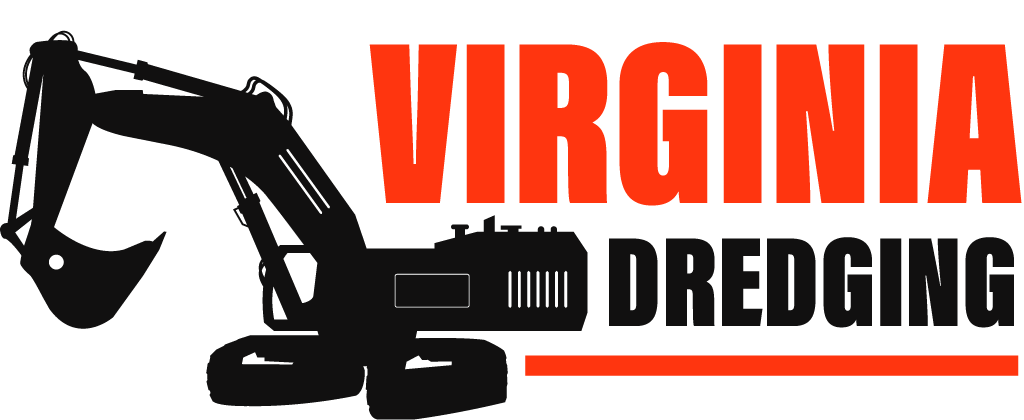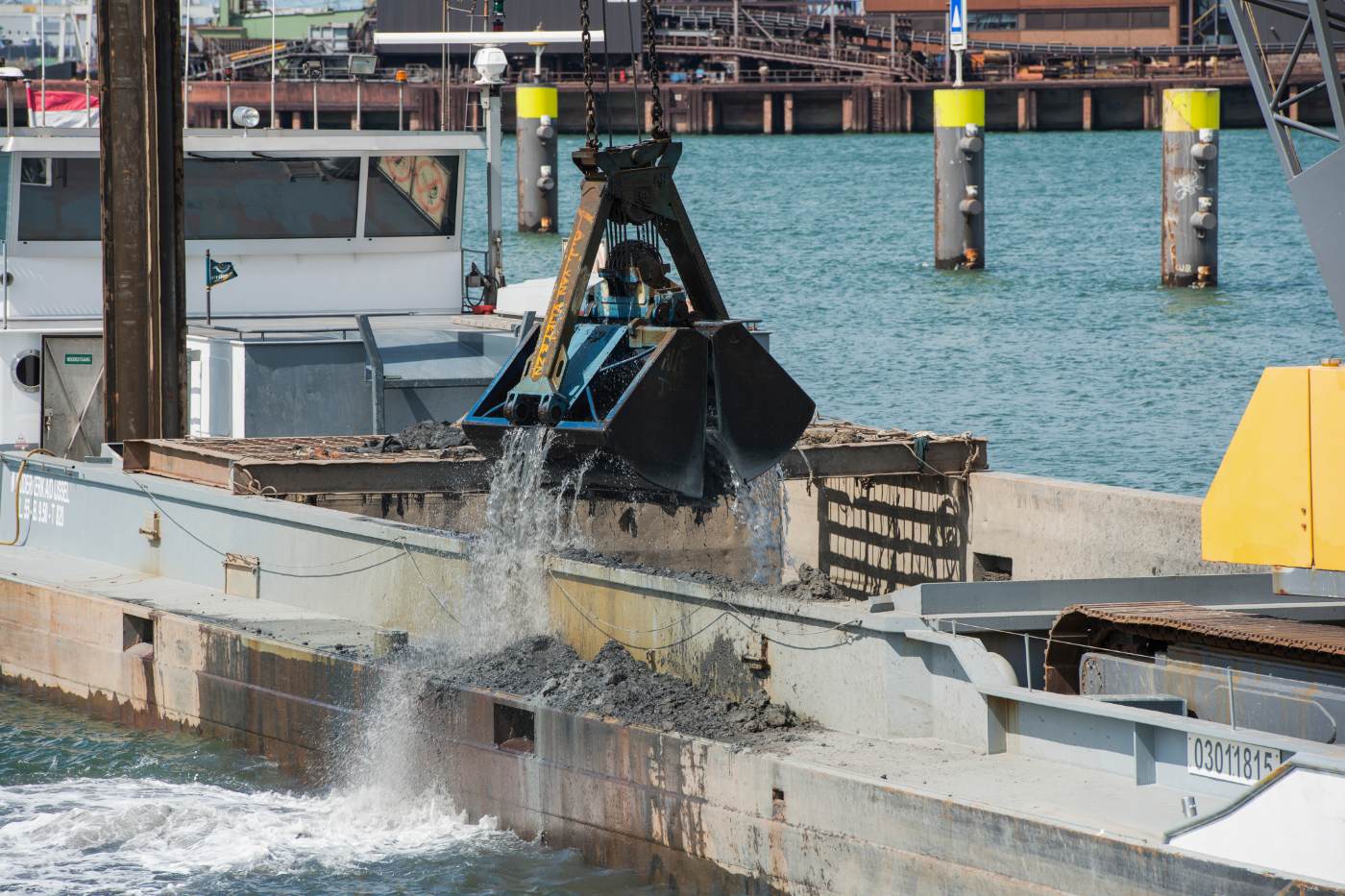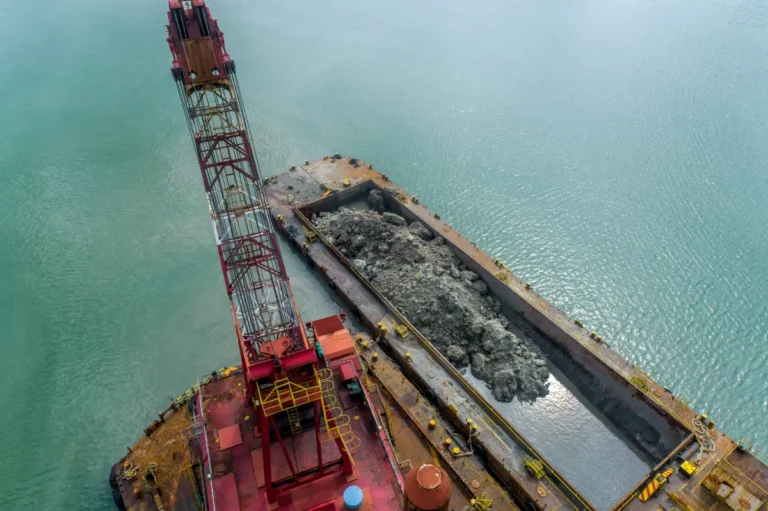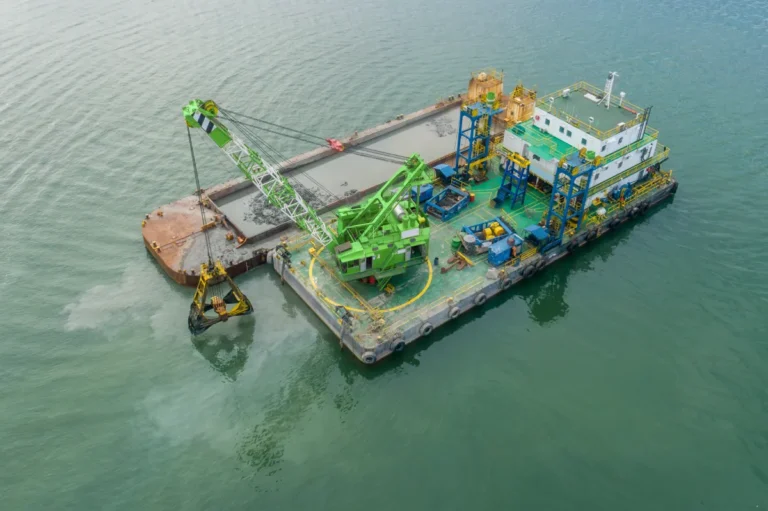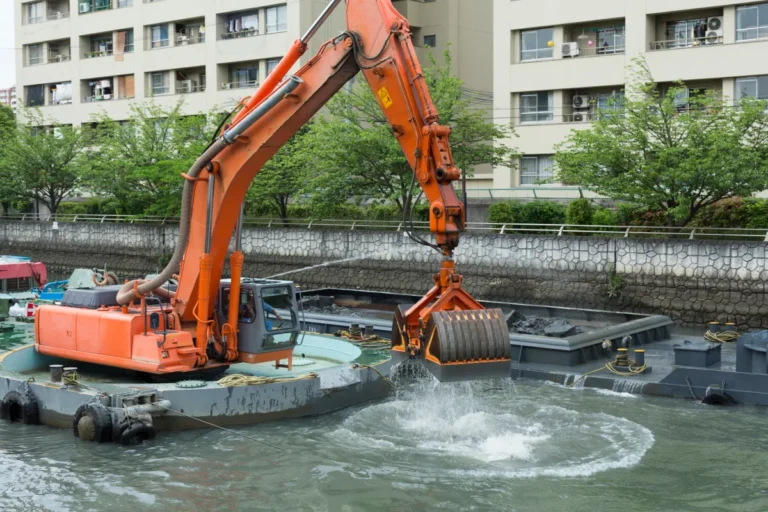Maintaining navigable waterways is essential for the smooth operation of harbors and marinas, where sediment buildup can quickly hinder access and reduce water depth. As silt, sand, and debris accumulate over time, vessels face increased difficulty maneuvering through channels, posing risks to safety, vessel integrity, and port logistics. To keep these critical zones operational and safe, harbor authorities and marina operators rely heavily on effective sediment management through dredge harbor operations.
Whether it’s a bustling commercial port or a leisure-focused dredge harbor marina, routine dredging is vital for ensuring reliable access, optimal dock depths, and smooth traffic flow. These operations are not just about deepening channels; they also play a key role in protecting aquatic ecosystems and reducing the environmental impact of human activity. An efficient harbor dredger program supports commercial shipping, enhances recreational boating access, and preserves natural water circulation patterns crucial to local marine habitats.
This blog explores the best practices that govern modern dredge harbor operations, focusing on maximizing efficiency through advanced technologies while maintaining strict environmental safeguards. From smart dredging tools to sustainable sediment removal strategies, harbor dredging is evolving into a science-led process that balances performance with ecological responsibility.
Understanding Harbor Sedimentation
Sedimentation in harbors is a continuous and often accelerated process, driven by both natural and human-induced factors. Naturally, rivers, tides, and coastal currents transport silt, sand, and organic matter into harbor basins, where the reduced flow velocity causes particles to settle. Human activities such as land development, deforestation, and construction further contribute to sediment loads by increasing surface runoff and erosion. These processes lead to rapid accumulation of material, making regular dredge harbor operations essential for maintaining safe and functional water depths.
The impact of sedimentation on harbor infrastructure is significant. As deposits accumulate, they reduce channel depth, narrowing navigation paths and increasing the risk of vessel grounding. This not only disrupts commercial operations but also leads to higher maintenance costs and potential damage to dock structures and pilings. In high-traffic ports, sedimentation can also obstruct access to fueling stations, loading docks, and turning basins, putting pressure on scheduling and safety standards.
In dredge harbor marina environments, sediment buildup presents a unique set of challenges. Marinas are often located in more enclosed or shallow areas, where natural flushing is limited. This makes them especially prone to rapid sediment accumulation, which can impact recreational boating, mooring access, and water quality. Additionally, smaller watercraft are more vulnerable to damage from shallow spots, requiring marina operators to deploy precision-based harbor dredger equipment tailored for tight, confined spaces. Understanding these dynamics is crucial for designing a proactive sediment management plan that keeps harbors and marinas operating efficiently year-round.
Key Components of a Dredge Harbor Operation
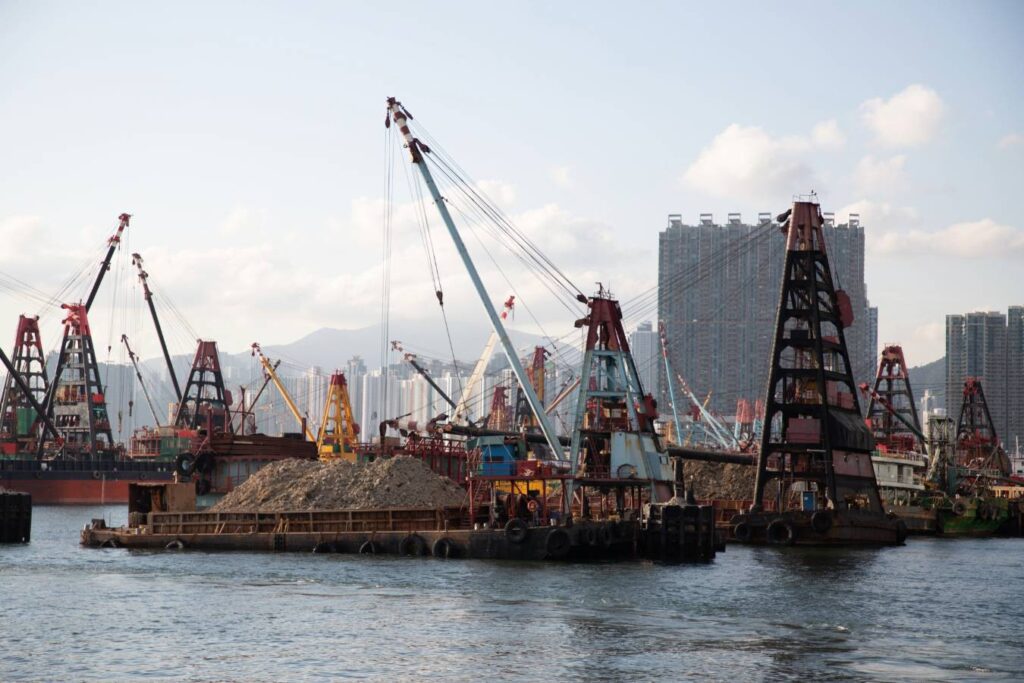
Successful dredge harbor operations depend on a combination of careful planning, data-driven decision-making, and the right equipment. Before any material is moved, hydrographic surveying and sediment analysis must be performed to determine the type, volume, and distribution of material to be dredged. These surveys use sonar, GPS, and sediment sampling to create precise dredging maps, allowing operators to identify critical buildup zones and prioritize removal efforts. In dredge harbor marina settings, where smaller waterways and limited maneuvering space are common, high-resolution sediment profiling is particularly important.
Choosing the appropriate harbor dredger is another critical step. Cutter suction dredgers are ideal for compacted or coarse sediments and provide high efficiency for continuous dredging in defined channels. Clamshell dredgers, often mounted on barges, are better suited for precision dredging near piers, pilings, and tight marina spaces. Hopper dredgers are used in deeper, open harbors, capable of storing and transporting large volumes of material offshore for disposal or reuse. Matching the right dredger type to the sediment conditions and site layout ensures optimal performance and reduces the risk of over-dredging or environmental disruption.
To minimize disruption to harbor traffic and marine ecosystems, dredging campaigns must be strategically planned and scheduled. This involves coordinating with port authorities, vessel operators, and environmental regulators to avoid peak usage periods and sensitive ecological seasons. For dredge harbor marina operations, nighttime or off-season dredging may be necessary to avoid interfering with recreational boating. A well-structured dredging schedule reduces downtime, enhances safety, and ensures compliance with operational and environmental standards.
Technologies Enhancing Harbor Dredging Efficiency
Modern dredge harbor operations are increasingly driven by advanced technologies that improve precision, reduce costs, and minimize environmental impact. Among the most transformative tools are GPS-guided and sonar-based dredging systems. These technologies enable operators to monitor dredge head position, depth, and movement in real time, allowing for more accurate sediment removal and ensuring that design depths are consistently met. In constrained environments like a dredge harbor marina, GPS and sonar systems are essential for avoiding infrastructure damage and maintaining precise control in shallow, crowded spaces.
Real-time dredging monitoring platforms further enhance operational visibility. These systems aggregate data from dredgers, sediment sensors, and hydrographic surveys into centralized dashboards, providing stakeholders with live updates on dredging progress, turbidity levels, and equipment performance. This allows project teams to make timely adjustments, optimize fuel usage, and comply with environmental regulations. For port authorities and marina operators, such transparency is invaluable for keeping operations efficient and accountable.
Automation and artificial intelligence are also making their mark on dredge harbor efficiency. AI-driven systems can predict sedimentation patterns, automate dredge routing, and control dredger movement for consistent performance. In combination with smart sensors and predictive analytics, automation reduces operator workload while ensuring that every pass of the harbor dredger contributes to a more effective and eco-conscious dredging campaign. These innovations are not only improving efficiency but also helping to redefine the standard for sustainable harbor and marina maintenance.
Best Practices for Sediment Removal
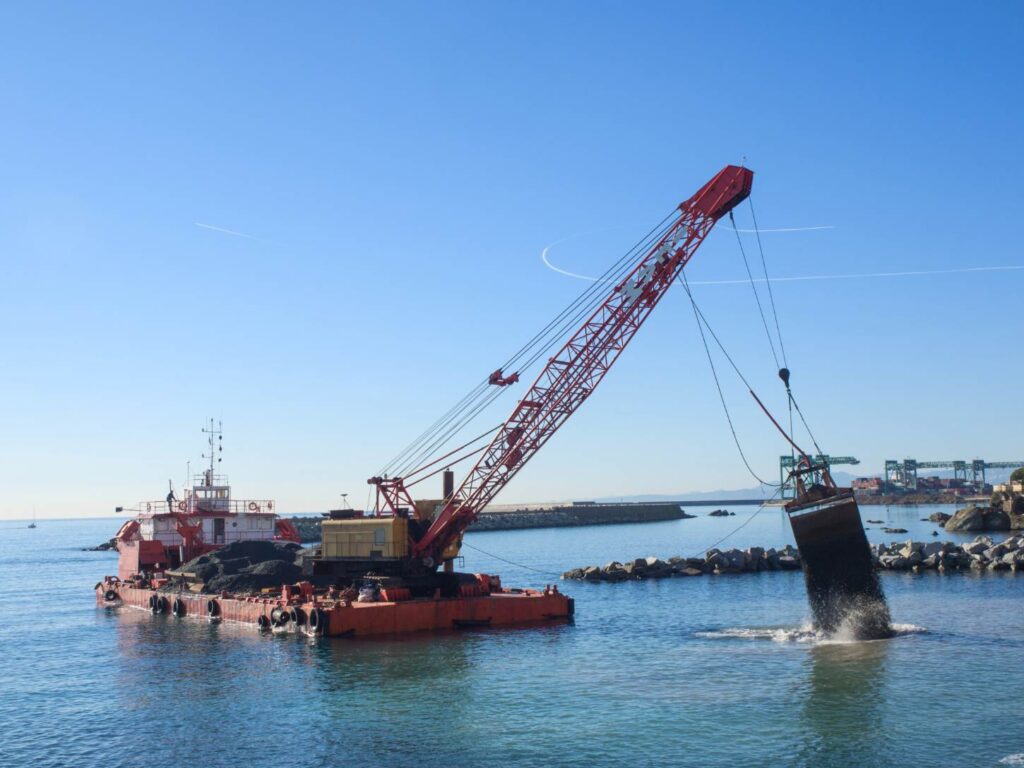
Effective sediment removal in dredge harbor operations requires more than just excavation—it demands precision, environmental awareness, and adherence to regulatory standards. One of the most critical practices is maintaining consistent dredging depths. Ensuring uniform depth throughout navigation channels reduces the risk of vessel grounding, improves waterway flow, and enhances safety for commercial and recreational traffic alike. In dredge harbor marina environments, where smaller craft are especially vulnerable, consistent depth maintenance is vital for user confidence and operational continuity.
Balancing sediment removal rates with environmental considerations is another essential aspect of best practices. Removing too much material too quickly can destabilize the seabed, disrupt aquatic habitats, or increase shoreline erosion. Using real-time monitoring tools, operators can calibrate their harbor dredger systems to maintain optimal removal rates that preserve both harbor functionality and ecological balance. Adaptive strategies—such as phased dredging or variable flow rates—can also reduce impact while maintaining project efficiency.
Managing turbidity and sediment plumes during dredging operations is a key environmental concern. Excessive turbidity can harm marine life, reduce water quality, and trigger regulatory violations. To mitigate this, dredge harbor crews use silt curtains, slow-speed dredging techniques, and specialized cutter heads designed to minimize sediment disturbance. In dredge harbor marina settings, where proximity to recreational users and sensitive ecosystems is greater, these mitigation techniques are not just recommended—they’re essential for long-term sustainability and community approval.
Environmental Protection Strategies
Environmental protection is a cornerstone of every responsible dredge harbor operation. Before dredging begins, securing the necessary permits and ensuring regulatory compliance is essential. Local, state, and federal authorities often require detailed plans outlining dredging methods, projected environmental impact, and sediment handling procedures. In sensitive dredge harbor marina areas, environmental scrutiny is often higher due to the proximity of recreational zones, aquatic life, and waterfront communities.
A critical step in environmentally responsible dredging is sediment testing. Analyzing the physical and chemical composition of sediment helps identify potential contaminants, such as heavy metals or hydrocarbons, that could pose environmental or health risks if disturbed. Based on test results, harbor dredger operators may need to adjust removal methods or implement containment protocols to avoid spreading pollution. Contamination mitigation may also include isolating and treating hazardous materials before transport or disposal.
To minimize water quality degradation, operators deploy silt curtains and adopt low-impact dredging techniques. These tools help contain sediment plumes, reduce turbidity, and prevent suspended solids from dispersing into surrounding ecosystems. In confined dredge harbor marina settings, where water circulation is limited, these precautions are especially important for protecting marine habitats and maintaining safe conditions for boaters.
Eco-conscious disposal and reuse of dredged material further enhance environmental stewardship. When uncontaminated, dredged sediment can be repurposed for beach nourishment, wetland restoration, or construction fill, turning waste into a resource. By integrating sustainable practices at every phase of the operation, dredge harbor projects can balance functionality with long-term ecological resilience.
Maintenance Planning for Dredge Harbor Marina Facilities

Proactive maintenance planning is essential for ensuring long-term efficiency and performance in dredge harbor operations, especially within confined and high-use dredge harbor marina environments. A key element of this planning is the establishment of regular sediment monitoring schedules. Routine hydrographic surveys and sediment level assessments help operators track deposition trends, anticipate critical buildup zones, and plan dredging activities before navigational hazards emerge. By monitoring sedimentation on a fixed schedule, marinas can maintain safe draft levels and avoid emergency dredging scenarios.
Predictive maintenance and asset management for harbor dredger equipment also play a vital role in sustaining uninterrupted operations. Through the use of onboard sensors, telematics, and maintenance tracking software, operators can detect early signs of wear, track usage hours, and schedule part replacements before breakdowns occur. This approach minimizes downtime, extends the lifespan of critical equipment, and ensures that dredgers are always ready when needed.
Equally important is coordination with marina stakeholders, including vessel owners, harbor masters, and local authorities. Since many dredge harbor marina facilities cater to recreational users, scheduling dredging activities around peak boating seasons, events, and tidal conditions is crucial to minimize disruption. Seasonal operation adjustments—such as performing dredging during off-peak months or nighttime hours—can help maintain user satisfaction while still achieving sediment management goals.
Choosing the Right Harbor Dredger for the Job
Selecting the appropriate harbor dredger is a crucial step in any efficient dredge harbor operation. The choice depends on several key factors, including sediment type, dredging depth, marina traffic, and overall budget. Fine silts and soft muds may require a different dredging method than coarse sand or compacted sediment. Shallow marinas with high vessel traffic demand equipment that can operate safely and precisely in tight spaces. At the same time, deeper commercial harbors may benefit from high-capacity dredgers optimized for volume and throughput. Balancing equipment capabilities with financial constraints ensures that the dredging campaign remains both effective and cost-efficient.
For dredge harbor marina applications, modular and transportable dredge equipment offers a significant advantage. These systems are designed for quick assembly, easy transport, and simplified deployment in remote or spatially restricted sites. Their compact footprint makes them ideal for marinas, where access can be limited and maneuverability is essential. Modular dredgers can also be scaled or modified to meet varying dredging requirements over time, offering long-term flexibility.
Versatility is another key consideration, especially in confined or high-traffic environments. Modern harbor dredger models come equipped with interchangeable cutter heads, suction nozzles, and propulsion options that can be tailored to specific conditions. This adaptability allows operators to perform targeted dredging with minimal disruption to other harbor users, making them particularly valuable in dredge harbor marina settings. With the right dredger in place, projects can achieve operational goals while maintaining safety, efficiency, and environmental compliance.
Future Trends in Dredge Harbor Operations
As the demand for sustainable marine infrastructure grows, dredge harbor operations are evolving to meet both economic and environmental goals. One of the most notable trends is the shift toward low-impact, sustainable dredging practices aimed at reducing emissions and overall carbon footprint. Electric and hybrid-powered harbor dredger units are gaining traction, replacing traditional diesel engines to minimize fuel consumption and airborne pollutants. In addition, more operators are optimizing routes, reducing idle time, and using eco-friendly hydraulic fluids to support cleaner operations.
The integration of environmental sensors and remote monitoring systems is also transforming how dredge harbor activities are managed. Sensors can now track turbidity, water quality, sediment displacement, and noise levels in real time, allowing operators to respond immediately to environmental thresholds. These monitoring tools are especially valuable in dredge harbor marina environments, where dredging occurs near sensitive marine habitats and public recreational areas. Combined with cloud-based dashboards, remote access enables centralized oversight and informed decision-making, even from off-site locations.
Dredging technology continues to evolve for use in shallow and environmentally sensitive marine zones. Innovations in compact dredger design, modular pump systems, and precision suction tools have made it easier to operate within the tight confines of a dredge harbor marina. These new-generation harbor dredger solutions are designed not only for efficiency but also for minimal habitat disruption, marking a clear move toward smarter, cleaner, and more adaptive dredging operations.
Conclusion
Efficient and environmentally responsible dredge harbor operations are essential for maintaining safe navigation, supporting commercial and recreational marine activity, and preserving aquatic ecosystems. From understanding sediment dynamics to selecting the right harbor dredger and leveraging advanced technologies, each phase of the dredging process plays a vital role in ensuring long-term harbor functionality. In particular, dredge harbor marina facilities require tailored strategies that balance operational needs with ecological sensitivity and public access.
As the industry advances, the adoption of sustainable practices, real-time monitoring, and modular equipment is shaping the future of harbor maintenance. Operators who embrace these innovations can reduce environmental impact, streamline dredging schedules, and maximize cost-efficiency. By aligning technical precision with environmental stewardship, dredge harbor operations can continue to evolve as a model of modern marine infrastructure management.

